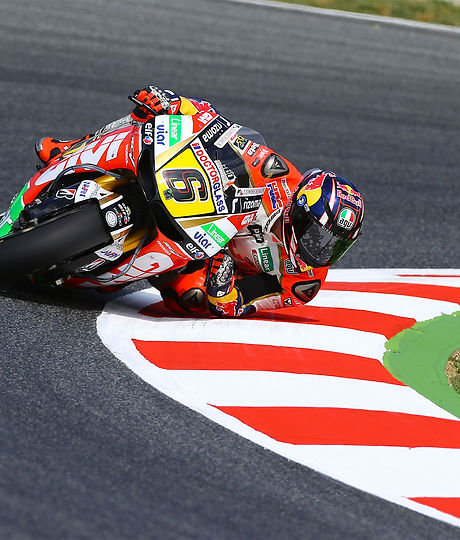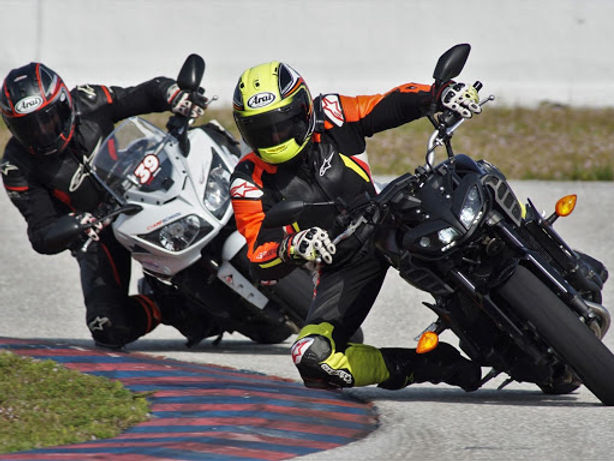
RIDING THE CURVES
July 20, 2020
Negotiating these curves of twisty curves tarmac dwells, the refinement of skills, an understanding of the dynamics and the blending of the mind, body and machine into ONE
Turning a motorcycle involves an amazing complexity of coordination between the eyes, hands, feet and thought all embedded in a combination of challenges to the rider.
INITIATING A TURN
THERE ARE 3 MAJOR WAYS of initiating a lean on a bike and they are
BY LEANING YOUR BODY IN THE DIRECTION OF THE TURN ___
A method that has invited lots of criticism
Slowest and most ineffective method
BY TURNING THE FRONT WHEEL__
And thus, using the resulting forces of gyroscopic precision that result from turning a rotating wheel to drop the bike into a lean
COUNTER STEERING_
Most Effective, Most Enigmatic
You can initiate and complete a turn on a motorcycle most effectively
The lean results in a turn and Vice-Versa as is usually thought counter-steering, literally is pushing forwards on the inside handlebar of the direction YOU want to turn into
That is initially steering in the opp. Direction to the one you want to turn to
The physical action of Pushing Forward
On the inside handlebar goes
’counter’ to what instinct or logic says

NOTE :
This very counter steering makes the motorcycle lean to the correct side
Far Quicker than the rest
Amazingly precise and an easy skill to learn
NOTE: ALL turns on a motorcycle at speeds above 20kmph or so are initiated through counter steering. This counter steering initiates a lean angle that helps generate camber thrust which in return helps the bike go around a curve.
CAMBER THRUST: takes the motorcycle around a corner without a large slip angle.
In super sticky tire (MotoGP Class) the camber thrust can be so strong the rider needs to burn the front wheel away from the curve to stop the motorcycle from oversteering into the turn.

UNDERSTANDING THE APEX
The term “apex” in relation to a turn is best explained as the point where the rider to follow a pre-determined and controlled line during the turn and all the way through it to the exit
Apex is also the point where the rider is actually closest to the inside of the turn and is making the biggest direction change during the entire turning manouvre.
The position of this ‘Apex’ depends almost entirely on how the rider sets up his bike for the turn.
That precise positioning of the apex is vital to safe and smooth turn negotiation make sure through and clear understanding of this concept is CRITICALLY IMPORTANT.
Roll on the throttle as early as possible but that does not mean as hard as possible. So, you want to gently apply the throttle as early as you can, but without upsetting the chassis. Your throttle position will always be indirectly proportional to lean angle. So when the bike is leaned all the way over, you can only give it just a little bit of throttle. As the bike stands up you can give it more and more throttle until the bike is fully upright where you can give it full throttle.

THE GOOD, THE BAD AND THE RUBBERY
There’s good and bad news with modern tires. The good news is that modern tires have gotten so sticky that on a warm, dry day with good traction, in many cases you can simply whack on the throttle and the tires will lift the weight of your bike and body up and out of the corner. But if you try to get out of a corner completely with the throttle on a wet, slippery day, the rear wheel slides out.
The reason for this is you’re asking the little contact patch of the rear tire to do all of the work to lift the weight of your bike and body up and out of the turn. The other way to get a bike out of a turn is to steer out of it.

THE VANISHING POINT
The crux of getting the apex right lies in judging the security of the curve you’re negotiating.
Best way of judging is to keep your eyes on the vanishing point ahead .
Its is the most distant point along your line of sight along the road and in the point where the two edges of the road appear to meet.
If the vanishing point appears to be moving away from you, the CURVE IS OPENING UP
If it stays at a constant distance from you, then the curve is CONTINUING at a CONSTANT RADIUS
If the vanishing point starts moving towards you, the CURVE IS TIGHTENING UP and your headed to a REDUCING RADIUS TURN
Decreasing radius curves in fact are the diciest of the lot, especially those thar you encounter on MOUNTAIN ROADS.
So entering slower than for a constant radius turn might make you through that curve w/o excitement/speed but if it tightens up on you, you’ll have room ahead to ride your way through safely.
Enter slow enough into the first one so that your exit speed, which will be a little faster than entry (But no too fast for the next entry)
MISJUDGING A TURN
“Oops! I’m too fast into this one!”
Usually you’ll already be into the turn when you’ll realize you’re too fast and that thought is enough to scare you.
A simple solution would be to just counter steer further and lean the more into the turn.
DO NOT CHOP THE THROTTLE
OR
USE EITHER BRAKES TO SCRUB SPEED
Chances are that will make the bike stand up and run wide possibly onto oncoming traffic.
The latter braking will eat up the traction reserves and you’ll low side into a painful slide on your butt possibly onto oncoming traffic
When you feel and/or hear a foot peg, main stand (or any other lower part of the bike)
Begin to grind on the floor
YOU’VE LEANED DEEP ENOUGH
Modern bikes have ample traction reserves even beyond this point and you’ll scrape your way past the curve well enough. The aim in such situations is not to panic and freeze.
FREEZING will make you rigid and you’ll end up CHOPPING THE THROTTLE and wait for that CRASH

BODY POSITIONING
Proper body positioning is another crucial element to a well-executed turn.
A turn on a motorcycle is a matter of getting your traction equation right.
One way of reducing the traction demands for the turn is to keep the motorcycle upright as possible
This helps keep a larger component of the weight of the motorcycle acting vertically downwards on the tire contact patch , increases friction , increases traction.
The motorcycle and rider share a unique relationship and a combined mass when the rider sits unmoving in the saddle
We know that leaning a motorcycle makes its centre of gravity drop inwards, the drop being proportional to the bike’s forwards speed.
The Centre Of Gravity = C of G of Rider + C of G of Bike= {RESULTANT} C of G of Bike + Rider
 |  |  |
|---|
KEEP IN MIND
The downwards push resists the outwards push through friction between rubber and tarmac. [ [A.K.A TRACTION]
Which is why there is less traction for braking or steering while in a turn because it is being used up in just maintaining the turn
The best way to learn to HANG OFF a little during turns is to initially begin by sticking your inside knee towards the inside of the turn and weighing the outside peg.
Get comfortable with a KNEE-OUT, before sliding your butt in small increment, al the while taking care that you hold-off your Body-weight by placing the ball of your feet on the foot-peg and also use your abdominal muscles to unload your arms.
Don’t tuck in towards the fuel tank in a racing crouch or drop your shoulder downwards as that will hamper with your vision and your ability to respond quickly and precisely.
Just lean with the bike, keep that head level, those legs ready to make you an active rider and vision focused as far into the turn as you can see



